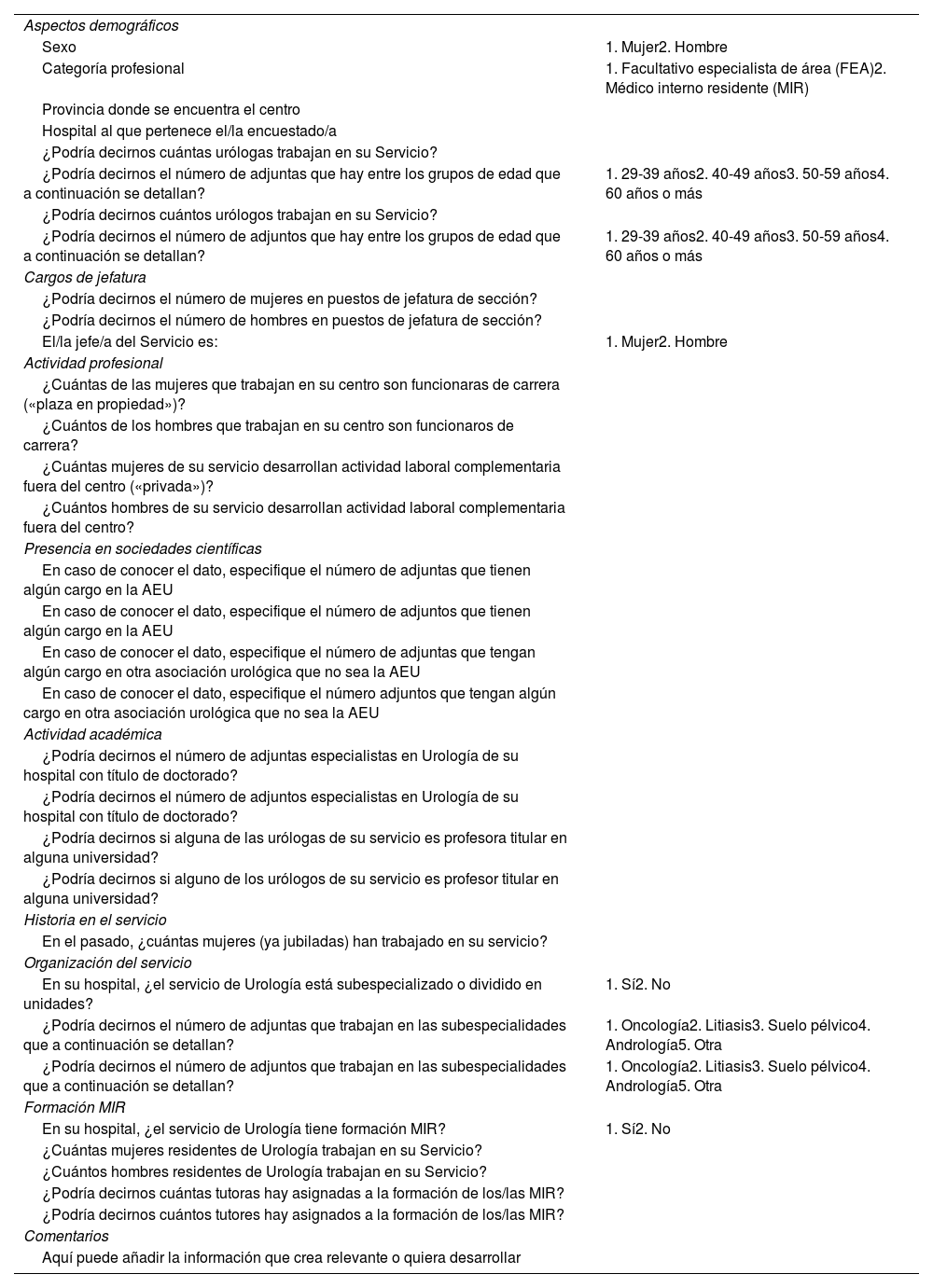Analizar la situación actual de las mujeres en la especialidad de Urología en España.
Material y métodosEstudio descriptivo a partir de los resultados de una encuesta electrónica remitida entre febrero y abril de 2020 a través de la base de datos del grupo de Residentes y Jóvenes Urólogos (RAEU) de la Asociación Española de Urología (AEU). Se analizaron las características demográficas de la encuesta y los resultados de la misma.
ResultadosSe obtuvieron 257 respuestas, correspondientes a 210 mujeres (81,71%) y 47 hombres (18,29%) procedentes de 111 hospitales en total. Se obtuvieron diferencias estadísticamente significativas (p<0,001), con una mayor proporción de hombres en todas las categorías, excepto en el grupo de adjuntas y adjuntos jóvenes (29-39años; p=0,789) y en el de residentes mujeres frente a residentes hombres (p=0,814). En los hospitales con unidades subespecializadas se encontró un mayor número de hombres en todas, excepto en la unidad de suelo pélvico, en la que no se observó una diferencia estadísticamente significativa (p=0,06). Respecto a cargos de responsabilidad, en solo 7 de 111 hospitales había jefas de servicio.
ConclusionesLa presencia de las mujeres en la especialidad de Urología es cada vez mayor, debido mayoritariamente a las generaciones más jóvenes. Sin embargo, el acceso de estas mujeres a puestos de relevancia es anecdótica.
To analyze the current state of women in urology in Spain.
Material and methodsDescriptive study based on the results of an online survey sent between February and April 2020 through the database of the Residents and Young Urologists group (RAEU) of the Spanish Association of Urology (AEU). Demographic characteristics of the survey and its results were analyzed.
ResultsIn total, 257 responses were obtained from 210 women (81.71%) and 47 men (18.29%) belonging to 111 hospitals. Statistically significant differences were observed (P<.001) with a higher proportion of men in all categories except for the group of young female and male attendings (29-39 years, P=.789), and the group of female residents against male residents (P=.814). The number of men was higher in hospitals with subspecialty units except for the Pelvic Floor Unit, where no statistically significant difference was observed (P=.06). Regarding positions of responsibility, only 7 out of 111 hospitals had female department chiefs.
ConclusionsWomen's representation in urology is increasing, mainly due to the younger generations. However, the access of these women to relevant positions is anecdotal.















